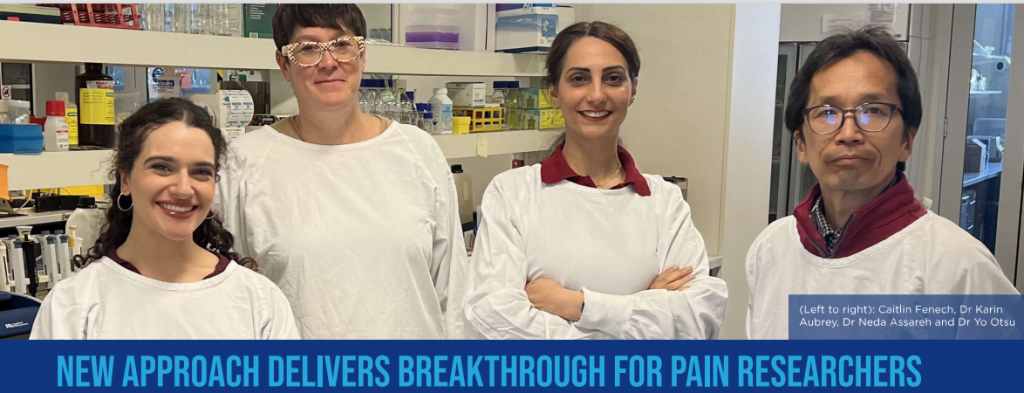
June 9, 2023 – NSLHD News – excerpts
Researchers at the Kolling Institute have made important progress towards the development of new treatments for chronic pain by identifying a small group of cells which can control pain responses.
The breakthrough comes as approximately 20 percent of the world’s population suffers from chronic pain, including more than 3.4 million Australians.
Dr Neda Assareh, a neuroscience research fellow from the Pain Management Research Centre said medications and psychological support some relief, but many people continue to experience ongoing pain without effective treatments, and this often leads to depression and anxiety.
“In this ground-breaking study, we used an advanced bioengineering technique to investigate how the brain organises pain signals, and we found evidence that a never-investigated cell type can control pain.
“These glycinergic neurons are found in the midbrain periaqueductal gray, a part of the brain which influences pain responses and anxiety linked to pain.”
Senior researcher Dr Karin Aubrey explains: “In the next stage of the program, we expect to determine how glycine-PAG neurons communicate with higher brain areas and investigate their ability to alter pain and anxiety outcomes.” This research has been published in the leading scientific journal eNeuro. The project is being made possible with partner support from the Ernest Heine Foundation, the Kennard Family Office and the Pain Foundation.
To enquire further about “partnering in pain” opportunities, contact Geoff on info@painfoundation.org.au.